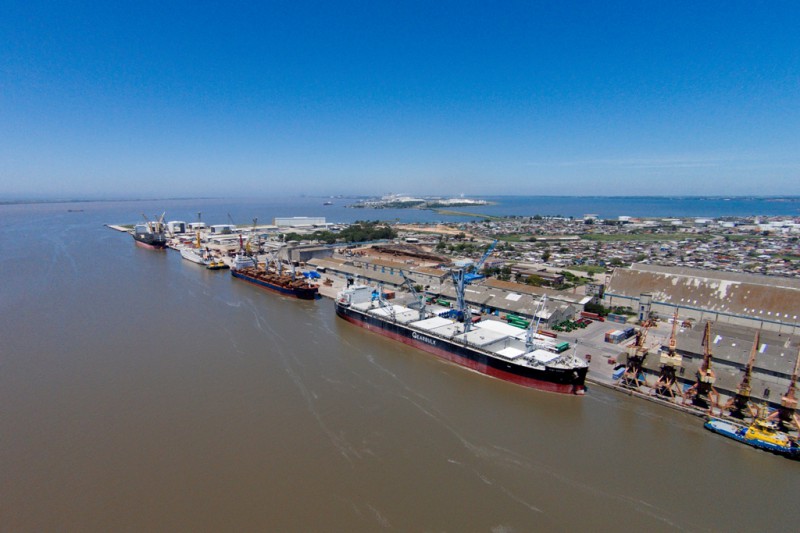RIO DE JANEIRO, BRAZIL – After two years of dredging works using a federal investment of R$500 million (US$100 million), the Port of Rio Grande – the main port in the southernmost Brazilian state of Rio Grande do Sul – will be able to receive vessels of up to 366 meters in length. This is because the port’s new draft, (15 meters) was officially approved on October 26th.
Thanks to the removal of more than 16 million cubic meters of sediment, the operational draft of the so-called internal channel, where the most important port terminals and the largest flow of cargo are located, went from 12.8 to 15 meters. The depth, which was 14.2, is now 16.5 meters. The handling capacity now meets international navigation standards, and the port is able to receive vessels of up to 366 meters in length- a difference of 29 meters in relation to the previous capacity of 337 meters in length.
“We are already working to prevent the channel from silting up and decreasing the load capacity again, requiring that we again spend hundreds of millions of reais to recover the draft. We are putting together a declaration so that in the first half of next year, we can begin investing R$30 to R$40 million annually in port dredging, permanently guaranteeing the cargoes of the ships that arrive and leave our state,” stated Eduardo Leite, State Governor.

“The approval of the new draft represents a lot for our state. It is the first time that it is approved, this means that, with the certification of the Navy, which is the port authority, we can guarantee cheaper and safer freight. This will attract international shipowners and more cargo. The port of Rio Grande is repositioning itself as one of the main ports in Brazil, not only due to the infrastructure it has built, but also the certification it gains now with the official approval”, said Fernando Estima, Superintendent of the Ports of Rio Grande do Sul.
Currently, over 25 percent of the GDP of the state of Rio Grande do Sul passes through private terminals that operate containers, agricultural bulk, fertilizers, oil, and petrochemical cargo in the port of Rio Grande, the equivalent of more than 40 million tons per year when the installed capacity is 50 million.
June was the best month in the history of Porto do Rio Grande. For the first time, it handled more than 4.4 million tons in 30 days. In addition, even with the pandemic, the first semester of 2020 was the second-best in terms of total cargo, reaching 19.9 million tons, or 6.97 percent higher than the same period in 2019.
The original dredging contract was signed in July 2015 by the federal government and then involved the state government, the former Secretariat of Transport, and the former Superintendence of the Port of Rio Grande (SUPRG) to obtain the IBAMA license. A task force was created to ensure that technical and environmental criteria were met. Support from the Brazilian Navy was instrumental throughout the process.
The winning consortium in the bid to perform the service was formed by the companies Jan de Nul do Brasil and Dragabrás, which closed the deal for R$368.6 million at that time. A judicial review then took place and work stopped, generating a significant increase in costs. In the end, with all the additional costs, the project bill climbed to R$500 million in federal government funds.
The work began in August 2018, and since then more than 16 million cubic meters of sediment has been removed from the access channel. On October 26th, the new draft depth of the Gaúcho port officially went from 12.8 meters to 15 meters – more than the initial forecast, which was 14 meters – on October 26th.
Source: MercoPress

